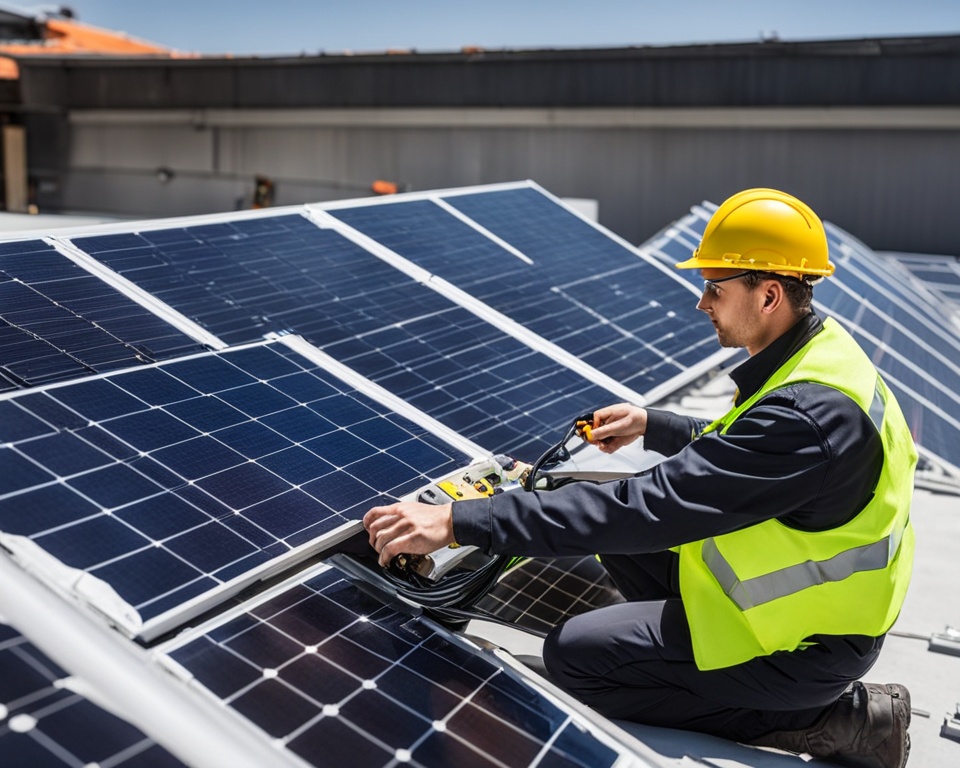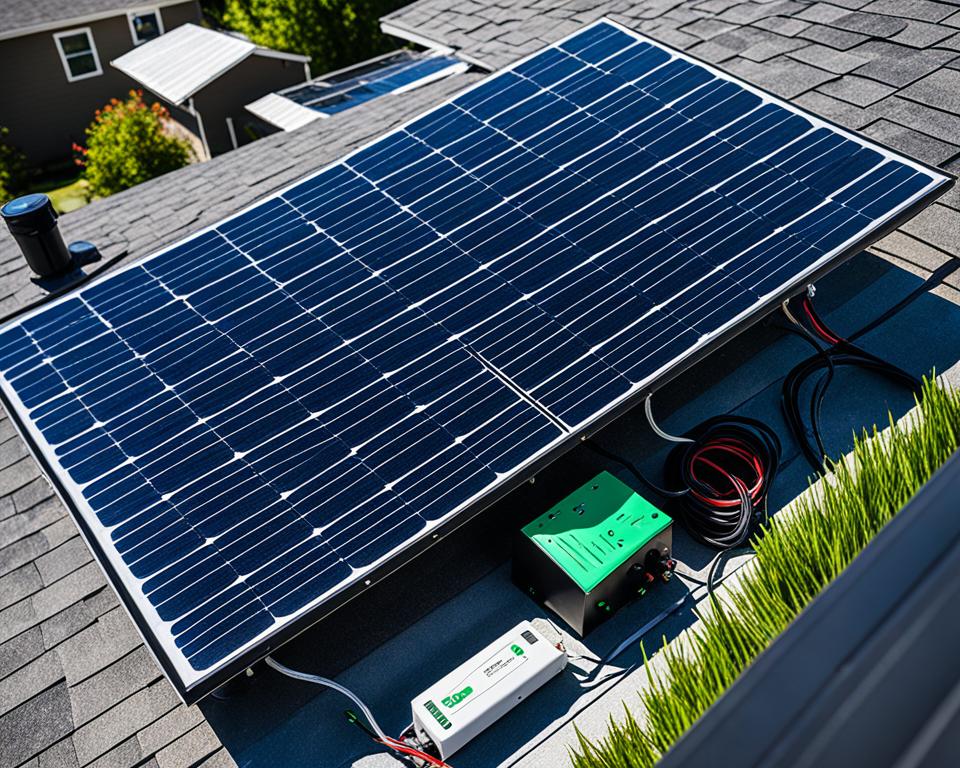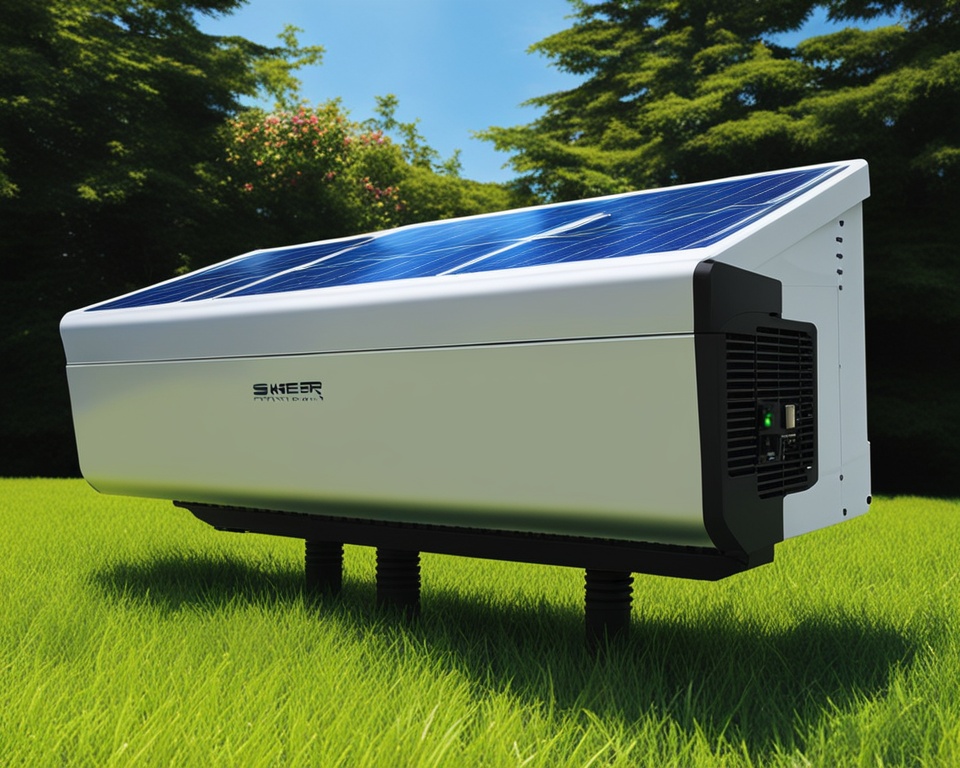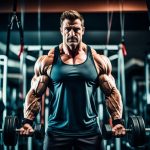Panel inverters are key in turning solar power from solar panels into electricity your home can use. They change direct current (DC) into alternating current (AC). This process is important to power your home or send extra energy to the grid. The best inverters efficiently convert solar power into usable energy, keeping your home powered by solar.
This article will help you understand different solar panel inverters. It will look into their features and guide you in picking the best one for your solar power system.
Read interesting things at : kamilyle
Key Takeaways
- Solar panel inverters change DC from solar panels into AC for your home.
- Good inverters mean you’ll always have renewable energy working for you reliably.
- It’s important to know the types of inverters available, like string, microinverters, and central ones.
- Finding the right match for your solar panel system ensures it will work best for you.
- Companies like SolarEdge, Enphase Energy, and SMA are known for their top-quality solar inverter solutions.
Understanding Solar Panel Inverters
A solar panel inverter changes the direct current (DC) power made by solar panels into alternating current (AC). This AC power can then be used at home or added to the grid. Solar inverters are key in making sure the electricity from solar panels is put to good use.
What is a Solar Panel Inverter?
A solar panel inverter is a key piece of tech. It changes the DC power from photovoltaic (PV) inverters into AC power. This is crucial because most home devices and the grid run on AC power.
The Role of Inverters in Solar Power Systems
Inverters are vital in a solar power system for many reasons. They convert DC to AC for use. They also watch over system performance, ensure the electricity flows correctly, and boost the solar panels‘ energy making. This helps make the solar power system more efficient and dependable.
Types of Solar Panel Inverters
When talking about solar panel inverters, there are various kinds with unique uses and advantages. Knowing about these types can guide you in choosing the best one for your solar system.
String Inverters
String inverters are common and affordable. They link to a set of solar panels and change the DC energy into usable AC energy. They are reliable and easy to set up, often picked for homes and small businesses.
Microinverters
Microinverters are more advanced. They sit on each solar panel individually. This setup helps monitor the system better and improve the performance of each panel. They are ideal when some panels are in the shade or face different directions.
Central Inverters
Central inverters are big units for industrial solar systems. They handle energy from many panels and convert it. These function well with large arrays thanks to their high capacity and efficiency.
| Inverter Type | Key Features | Typical Applications |
|---|---|---|
| String Inverters | – Cost-effective – Reliable – Easy to install |
Residential, small commercial |
| Microinverters | – Optimized panel-level performance – Monitoring capabilities – Shade mitigation |
Residential, small commercial |
| Central Inverters | – High capacity – Efficient for large systems – Grid-tie capabilities |
Commercial, utility-scale |
Choosing the Right Solar Panel Inverter
When you pick a solar panel inverter, think about several key things. You want to make sure your solar power system works at its best. This means looking at the size and setup of your solar panel system. Also, the inverter’s efficiency and quality are important, as is its warranty. Finally, think about how you plan to use the system: either connected to the grid or not.
Factors to Consider
Choosing the right solar inverter means understanding what your pv inverter system needs. Think about how much power your solar panels will make. That includes the number of panels or groups of panels, plus their voltage and current. You need to match the dc to ac converter with your solar power converter system. This is key for the grid-tie inverter or off-grid inverter to manage your power well.
Matching Inverter to Solar Panel System
Getting the right size solar panel inverter for your solar panel system is crucial. It helps boost the amount of power you make and use. Look at the total wattage of your panels, the number of connections, and their voltage and current. This information guides you to the perfect solar inverter. With the right pv inverter, you can smoothly turn the dc to ac power your solar power converter makes. This is true whether you’re tied to the grid or not.
solar panel inverter
Solar panel inverters are key in solar systems. They change direct current (DC) to alternating current (AC). This is how homes, businesses, and the grid use or store solar energy. Solar panel inverters, solar inverters, and pv inverters are made for top performance, ensuring a steady power flow.
The dc to ac converter in these inverters is crucial. It transforms solar panel electricity to power our daily lives. By using the latest technology, these inverters improve your system’s overall efficiency.
Choosing the right solar panel inverter is vital, no matter the system you pick. It’s the heart of your solar power setup, turning sunlight into electric power efficiently. Knowing this helps you get the most from your solar energy investment.
Top Solar Panel Inverter Brands
Several names lead the way in solar panel inverters, offering new solutions and steady operation. SolarEdge, Enphase Energy, and SMA are among the best.
SolarEdge
SolarEdge stands out with its advanced string inverter tech and power optimizers. Their inverters work to get the most power from each solar panel, even in the shade. Plus, SolarEdge lets users closely monitor and control their solar systems from a distance. This makes their solar panel inverters a top pick for many.
Enphase Energy
Enphase Energy is one of the first to use microinverter tech, changing how solar energy is managed. Their solar inverters attach directly to the solar panels, bringing more control and oversight to the system. This method has put Enphase in a leading position in the pv inverter market, especially for homes and small businesses.
SMA
In Germany, SMA is known for crafting top-notch string inverters and central inverters for many uses. Their solar panel inverters are hailed for efficiency, dependability, and a long lifespan. This has made SMA a top choice for big solar projects. Their deep knowledge and drive for new ideas have helped them become a major global name in the solar inverter sector.
Installation and Maintenance
Setting up and keeping your solar panel inverter in shape is key. While some might try DIY, a skilled solar installer is better. They make sure everything is safe and legal.
Professional Installation Recommended
Putting in a solar panel inverter needs special skills. A pro knows just how to fit it, link it to the solar panels and power system, and make it work smoothly and safely.
Regular Maintenance and Monitoring
Looking after your solar inverter is vital. Clean it, watch how it’s doing, and update its software regularly. This helps it last longer and run better, letting you enjoy solar power for years.

Grid-Tie vs. Off-Grid Inverters
Solar panel inverters come in two main types: grid-tie inverters and off-grid inverters. Grid-tie inverters work by tying into the electrical grid. They allow the extra solar energy to flow back into the grid. This can help you earn credits or even money. Off-grid inverters, however, power systems that stand alone. They don’t connect to the grid and provide direct power to a home or property.
| Feature | Grid-Tie Inverter | Off-Grid Inverter |
|---|---|---|
| Grid Connection | Connected to the electrical grid | Not connected to the grid, standalone system |
| Power Flow | Allows excess solar energy to be fed back into the grid | Provides power directly to the home or property |
| Battery Storage | May not require battery storage, depends on grid availability | Requires battery storage for off-grid operation |
| Applications | Residential, commercial, and utility-scale grid-tied solar installations | Remote, off-grid locations, backup power systems |
When picking between a grid-tie inverter and an off-grid inverter, it depends on your solar system’s needs. Grid-tie inverters are for those looking to make the most from their solar investment. They work by selling extra energy back to the grid. Off-grid inverters are best for places without electrical grid access, like in remote areas, or for users wanting to be self-sufficient.
Solar Panel Inverter Efficiency
Solar panel inverters play a big role in how well a solar power system works. Their efficiency is key. Efficiency shows how much of the sun’s power the inverter can change into power you can use. It’s vital for getting the most from your solar panels.
Understand Inverter Efficiency Ratings
When picking a solar inverter, look at its efficiency rating. This rating tells you how much of the power it takes in, it turns into power you can use. The higher this rating is, the better the inverter is at using the sun’s power.
Factors Affecting Efficiency
Several things can affect how well a pv inverter works, such as design and component quality. Even the weather and how much power you’re using matters. Manufacturers work hard to make sure their inverters work well under all conditions.
| Factor | Impact on Efficiency |
|---|---|
| Inverter Design | How an inverter is built really matters. Good designs and quality parts help the inverter work better, changing more solar power into usable electricity. |
| Temperature | The weather can affect your inverter. Too hot or too cold and it might not work as well. This stops it from turning as much solar power into electricity. |
| Voltage | The right voltage is critical for your inverter to be at its best. If the voltage isn’t right, it will lose some power and won’t work as efficiently. |
| Load | How much power you’re using can also change how well the inverter works. It’s usually most efficient when it’s putting out its maximum power. |
Safety Considerations
Safety is very important when it comes to solar panel inverters. To avoid electric shocks or other dangers, strictly follow electrical safety steps. Make sure all electrical connections are secure. Also, it’s key to properly ground the inverter. This safeguards both the system and the people working on it.
Electrical Safety
Only qualified professionals should handle solar pv inverters. They must be knowledgeable about the dangers of high voltage. Always obey your area’s electrical codes and the maker’s safety directives. Never try to fix or change a solar inverter yourself without the help of a pro.
Outdoor Ratings
When placing solar panel inverters outside, choose ones meant for it. These inverters should be built to withstand the weather. This means they can handle rain, snow, and extreme heat or cold. Good airflow and heat management are also crucial for outdoor inverter setups.

Cost and Return on Investment
The cost of a solar panel inverter matters a lot upfront. It affects the whole solar power system investment. But, you should also think about the money you’ll save and how much you could earn back. Top-notch solar inverters might be pricier at first. Yet, they offer more efficiency, reliability, and can last longer. This means you save more money over the life of your solar power system.
Initial Investment
When looking at a pv inverter, its cost can change a lot. This depends on its size, what it can do, and the brand. Basic solar panel inverters might be about $500. But, those with more features or that are bigger can be in the thousands. Before you decide, it’s smart to think about the up-front cost. Consider if it matches the benefits you should see over time.
Long-Term Savings
At first, buying a solar panel inverter might seem expensive. But, over time, you could save a lot on energy and maybe even make money. A top-tier solar inverter helps get the most power from your solar power system. This can cut your electricity bills. You could even get paid for extra power you share with the grid. Over 10 to 25 years, the savings could be much more than what you paid at the start.
Innovative Solar Panel Inverter Technologies
The solar panel inverter market keeps getting better, bringing out new tech to boost how solar systems work. Recent improvements include blending integrated power optimization, better supervision and control, and using machine learning and artificial intelligence for more efficient management.
A great step forward is the use of power optimization technology in inverters. This tech offers precise control over each solar panel. It ensures every panel works its best, even if it’s partly shaded or facing other performance-hindering factors.
New solar panel inverters also come packed with top-notch supervision and control traits. They give out real-time info about energy creation, system health, and entire performance. Users can check this info on easy-to-use apps or websites, which helps in managing their solar system.
The cherry on the top is the inclusion of machine learning and artificial intelligence. These technologies can both study and make use of system info. They can spot usual patterns and make changes automatically to boost the system’s energy yield and efficiency. This ensures the inverter is always working its best.
| Technology | Description | Benefits |
|---|---|---|
| Integrated Power Optimization | Granular control and monitoring of individual solar panels | Maximizes efficiency even in partial shading conditions |
| Advanced Monitoring and Control | Real-time data and intuitive user interface | Empowers informed decision-making and system optimization |
| Machine Learning and AI | Automated analysis and optimization of system performance | Enhances efficiency and reliability of the solar panel inverter |
As the field advances, these new techs are poised to change how people and companies use solar energy. They promise more dependable, efficient, and easy-to-use solar power.
Maximizing Solar Panel Inverter Performance
Maximizing your solar panel inverter’s performance involves two main steps. You need to pick the right size and manage shade effectively. This helps your solar system work its best, producing more energy.
Proper Sizing
It’s important to choose the correct size for your solar panel inverter. Ensure it can handle all your solar panels’ power. By doing so, you prevent overloading or underusing your inverter. This makes your solar inverter run more efficiently and produce more energy.
Shade Management
Shade can greatly reduce how well your inverter turns sunlight into power. To combat this, think about using micro-inverters or power optimizers. These technologies minimize shading effects on just some panels, keeping the system’s performance strong. Also, regularly check your system for shaded areas and promptly fix them to boost inverter performance.
Conclusion
Solar panel inverters play a vital role in a solar power system. They convert the DC electricity from solar panels into AC, which is used in homes, businesses, or sent back to the grid. Knowing about the various solar panel inverters, their features, and what to look for helps ensure your solar setup runs efficiently.
The technology behind inverter technologies is always getting better. This makes it a great time to get a top-notch solar panel inverter for your place. Whether it’s a string, micro, or central inverter, picking the right one for your solar system is key for saving energy and money over the long haul.
Top concerns should be safety, efficiency, and keeping costs down. This way, your solar panel inverter will do its job well and serve your home or business with clean power. With the perfect solar inverter, you’re on your way to using energy wisely and living greener.


